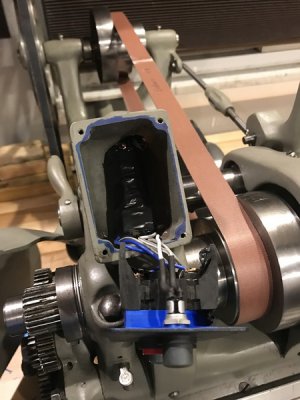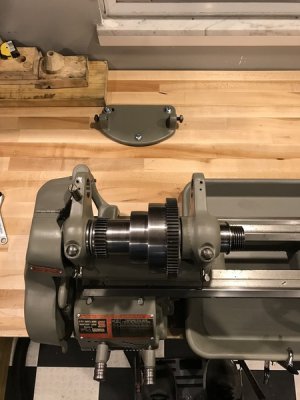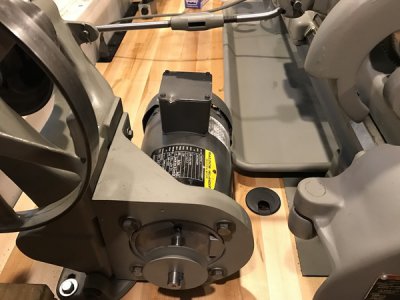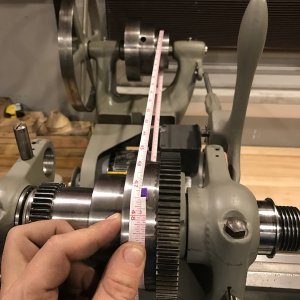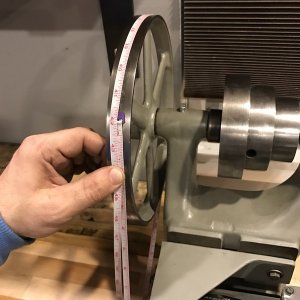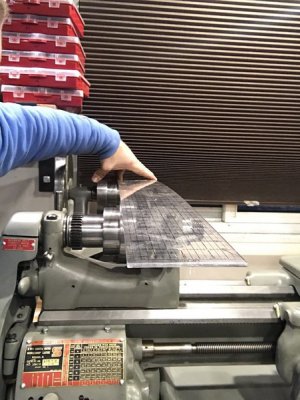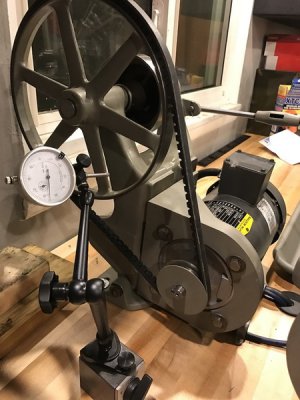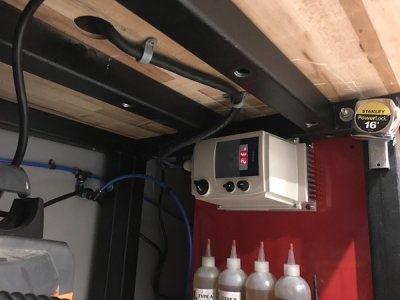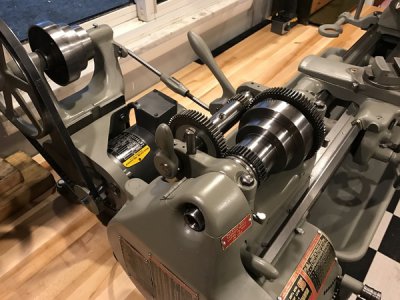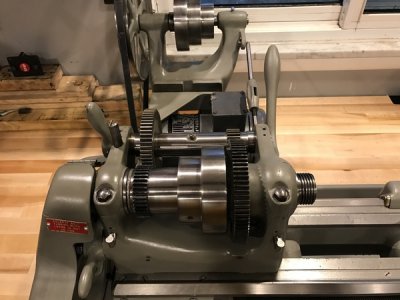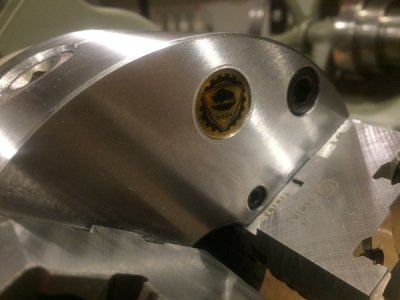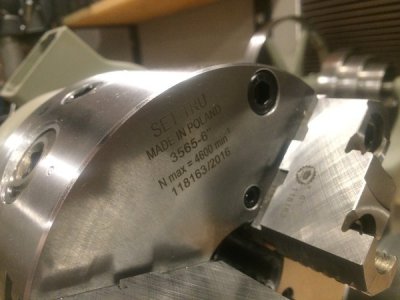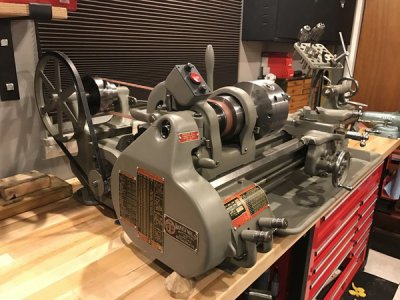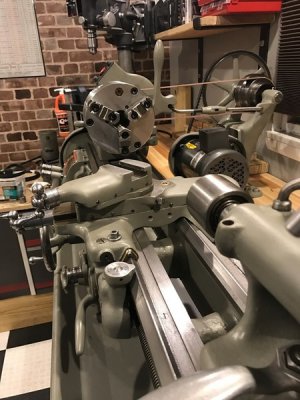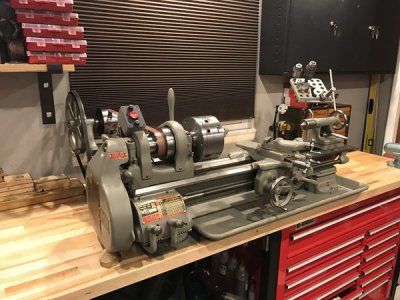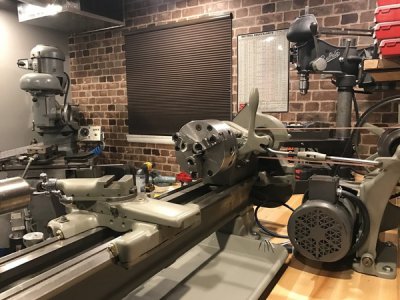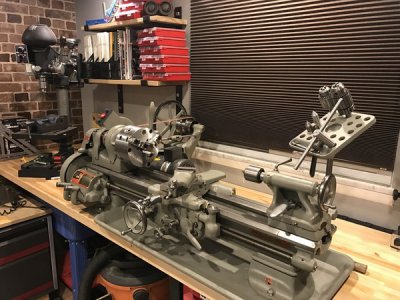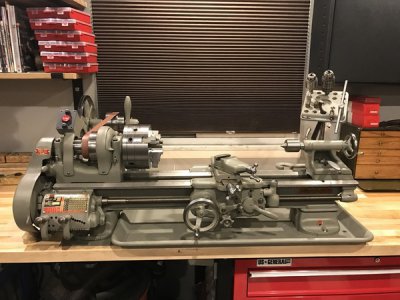Switch
My lathe is a 1941 model (made in Oct 1940, actually) and was originally equipped with the now obsolete and impossible to find push button switch. When I bought the lathe, the push button switch gear guard casting was included but had been retrofitted with a drum switch. I realize the drum switch is probably the better option, but I really wanted to pay homage to the lathe's history and restore it to original. Of course, you simply can't get these switches any longer. I decided I would make my own.
I designed the switch plate based off of
this photo of the original switch:
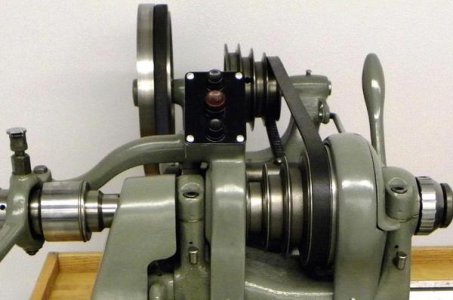
I used a stop switch from a 1971 Allen Bradley switch box. The FWD/REV arrow switch buttons are from a vintage Evinrude boat motor controller. The 3D printing was really course and needed a LOT of work to bring into a usable shape:
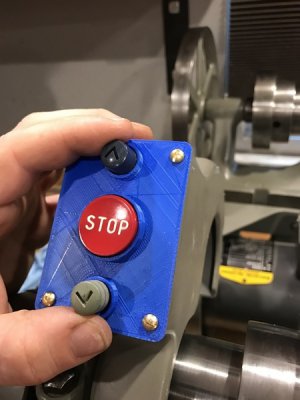
I used an epoxy filler designed for smoothing 3D prints in order to fill in the gaps in the print:
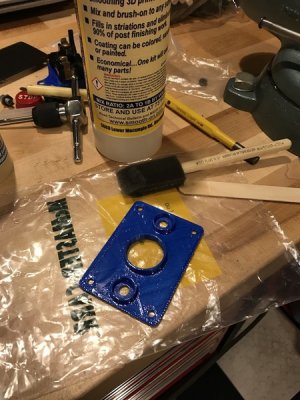
Lots and lots of layers of paint and sanding to fill in the smaller pin holes:
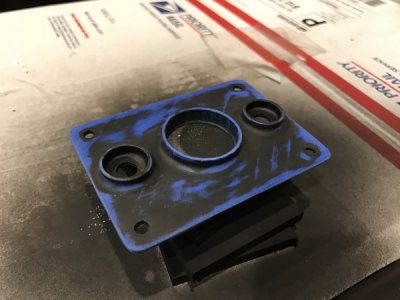
It ended up with a pretty nice finish!
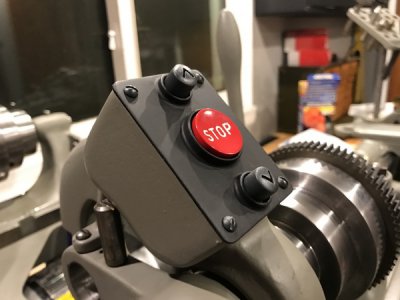
The Allen Bradley stop switch was highly modified and then mounted to the 3D print:
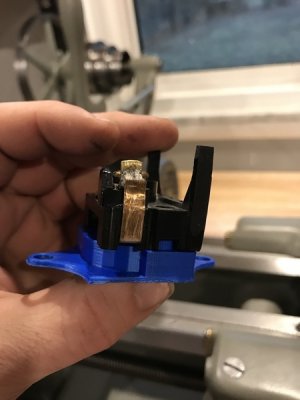
The Evinrude switch buttons were shortened, drilled out, and the electronics switch buttons inserted in them so that the switch buttons will snap onto the switches:
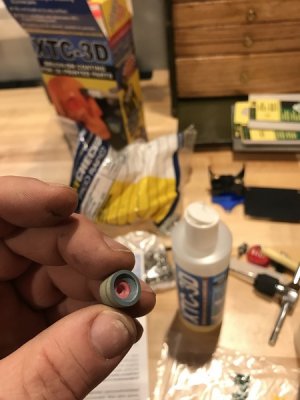
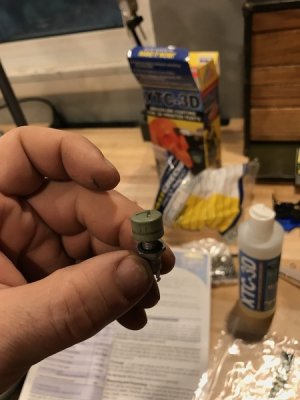
The switch assembly was then assembled:
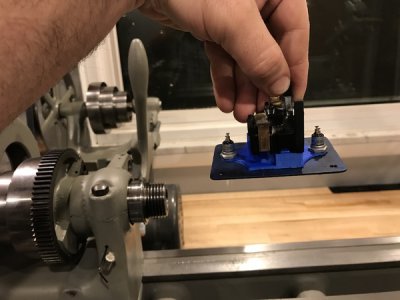
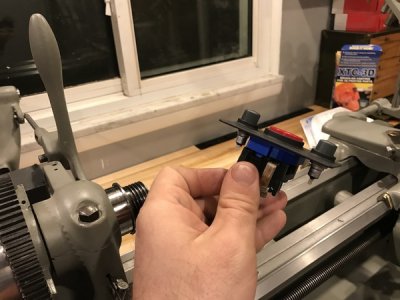
Turns out that my VFD doesn't support on/off via momentary switches like I thought it did. I ended up
using the schematic mentioned here in order to build a flip-flop latching relay circuit so I could turn my momentary switch pulses into a latching switch. I built this circuit:
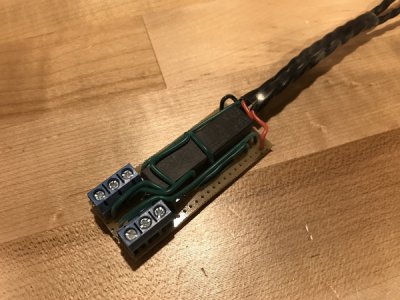
Wires were installed on the switch:
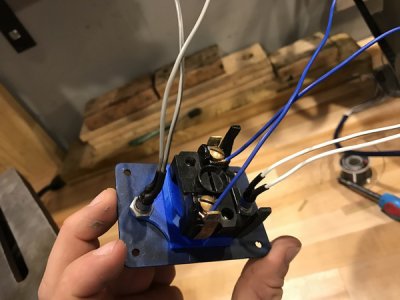
And then somehow I had to figure out how to fit this mess into the switch casing:
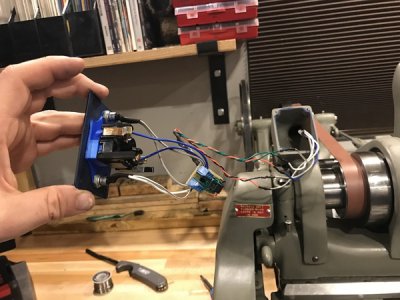
...Which went fine:
